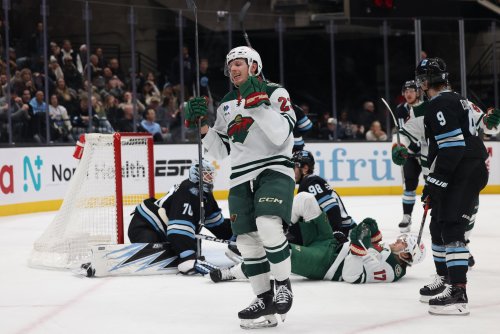
The beginning of the NHL season is always a time of joy for the excited hockey fan who has been trapped in an offseason of roster transactions, prospect speculation, and armchair GM thought experimentation. There are several other landmarks that announce the season is about to begin such as fantasy player rankings, team season previews, and the immeasurable #hottakery of predicting NHL standings at the end of the season. Almost every major outlet partakes in the urge to participate in demonstrating how incredibly wrong they can be at predicting the future of hockey.
Largely this is because most authors of said productions use the effect of offseason transactions to temper their gut reactions to how a team should perform versus the previous season. Rarely can you find such a prediction that attempts to model the season by implementing the impact of newly acquired and lost players, so you should always proceed with caution when considering season predictions. These articles can certainly breathe undue optimism into a fan base and work those fans into a frenzy that will end in huge disappointment.
Predicting anything in the future is likely a fool’s errand - any team is one injury to a key player away from completely changing the complexion of their season. But there are certainly some methods used that are better than others. Today we’ll take a closer look at an example from a major media source that is constructed purely of the author’s #hottakes and another example of one based on research, facts, and statistics to help discern how much stock you should put into trying to predict final standings at the beginning of the season.
Case #1: Major media outlet publishes author’s gut reactions
NHL point projections: How we see 2016-17 season unfolding
Allen’s predictions are a good example of how most publications construct their predictions: they ask their top NHL pundit to give their opinion of how they see the season working out. This is literally asking the author to assign rankings and point totals based on their biases and beliefs and in the end is quite likely to be dubiously wrong. Most fans probably understand this to some degree, but it is helpful to remember how these predictions are crafted from hopes and dreams rather than based in fact and reality. Here’s a few more examples that are constructed in much the same manner. And even though TSN makes a feeble attempt at incorporating some stats and doesn’t give an attempt at forming point totals also reveals the fickle nature of predicting NHL results.
Fantasy Hockey Primer: Projections, 30-Team Analysis
A first crack at predicting the 2016-17 NHL standings - Article - TSN
Case #2: Using actual data to predict results
Micah McCurdy @IneffectiveMath of www.hockeyviz.com is an NHL stats guru that has been working to divide, dissect, devour, and analyze all NHL stats. Micah is a mathematician and has developed a predictive model surrounding NHL games he calls Cordelia. Cordelia is an amalgamation of statistics that have been found to have a high correlation to winning hockey games. Specifically, this model measures the probability of the home team winning each game. Micah has used this single-game prediction method to simulate the entire NHL season and hence determine the likely final standings based on the simulation. He is also not shy about calling out the things he cannot simulate with trackable stats, thus providing a calculated margin of error.
Though you might not understand advanced statistics in the NHL or have a desire to do so, you should be able to gain confidence from the fact that an incredible amount of calculation has been done to assure that opinions and biases are washed out of the model. This is in direct conflict with how point predictions have been put together in the past, but it certainly gives plenty of supporting information and does not reply on a single person’s opinion.
Though of course the eye test vs fancy stats debate will continue in the NHL, the stat-based model of prediction promises a much higher degree of accuracy over the course of the season. And even if the math overwhelms you, it has been presented in such a way that anyone can understand the output.
Think you could write a story like this? Hockey Wilderness wants you to develop your voice, find an audience, and we'll pay you to do it. Just fill out this form.








Recommended Comments
There are no comments to display.
Join the conversation
You can post now and register later. If you have an account, sign in now to post with your account.
Note: Your post will require moderator approval before it will be visible.